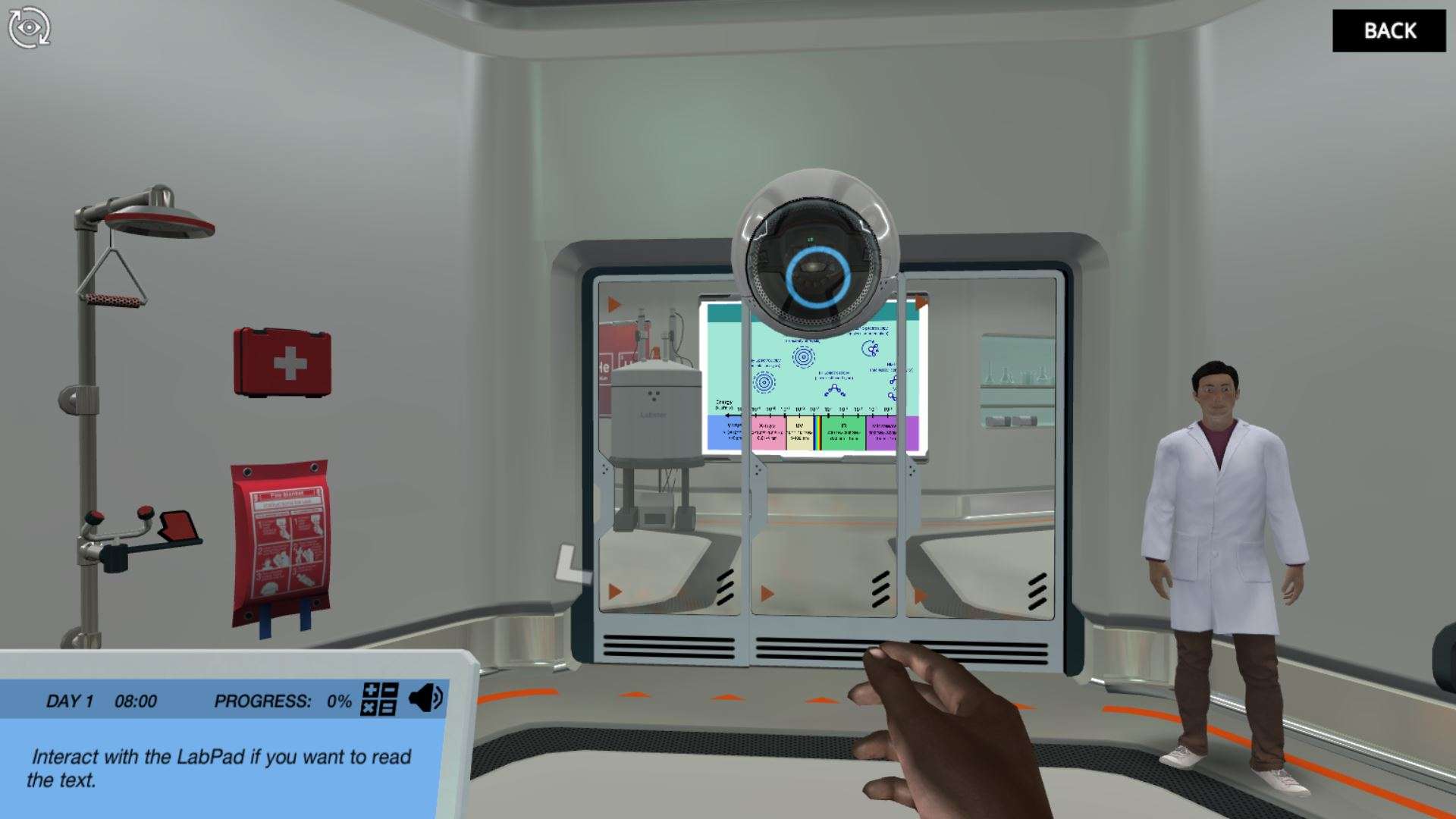Heading 1
Heading 2
Heading 3
Heading 4
Heading 5
Heading 6
Lorem ipsum dolor sit amet, consectetur adipiscing elit, sed do eiusmod tempor incididunt ut labore et dolore magna aliqua. Ut enim ad minim veniam, quis nostrud exercitation ullamco laboris nisi ut aliquip ex ea commodo consequat. Duis aute irure dolor in reprehenderit in voluptate velit esse cillum dolore eu fugiat nulla pariatur.
Block quote
Ordered list
- Item 1
- Item 2
- Item 3
Unordered list
- Item A
- Item B
- Item C
Bold text
Emphasis
Superscript
Subscript
About This Simulation
Join Sam in the Labster lab where you will use proton NMR spectroscopy to elucidate the structure of an unknown organic compound. You will work with the fundamental concepts and functional groups needed to get started using this powerful technique.
Learning Objectives
- Describe the fundamentals of how proton NMR signals are obtained
- Define chemical shift and peak splitting
- Describe effects of molecular structure on chemical shift and peak splitting
- Explain the concept of equivalent and non-equivalent protons
- Assign chemical shifts for protons in the following types of groups: Alkanes, alkyl halides, alcohols, ketones
- Evaluate peak splitting and peak integrals for molecular structure elucidation
- Use proton NMR spectroscopic data to deduce the full structure of a simple organic compound
About This Simulation
Lab Techniques
- Proton NMR
Related Standards
- Alignment pending
- Alignment pending
- Alignment pending
Learn More About This Simulation
How do we in chemistry figure out what chemicals are in an unknown sample? In this simulation you will learn the basic tools needed for interpreting a proton NMR spectrum and use them to elucidate the structure of an unknown compound.
The Labster Food Chemistry Department
You will start off by meeting with Sam, who’s trying to figure out what’s in a sample from the local canteen. If you accept the challenge, it’ll be you who leads the investigation!
Chemical shift
The sample is sent for analysis and you, following a short briefing on the main principle of NMR, will dive into the first main concept: chemical shift. You will practice its application on a series of presented spectra while Dr. One highlights key points to take into account.
Peak splitting
Next you’ll progress to the virtual holotable, where youwill encounter a second layer of complexity to the spectra you’re challenged with: peak splitting. Using your knowledge of organic molecules, and now chemical shifts, you need to figure out exactly which protons in a molecule are equivalent, and what leads to the split patterns you are observing.
Tackling the sample from Sam
Armed with the fundamental tools of NMR interpretation, you return to the spectrum from Sam’s sample. As a final support, Dr. One will add an extra instrument to your kit. But solving the spectrum will be entirely up to you. Will you be able to leverage proton NMR to elucidate the structure of the unknown compound in Sam’s sample?
For Science Programs Providing a Learning Advantage
Boost STEM Pass Rates
Boost Learning with Fun
75% of students show high engagement and improved grades with Labster
Discover Simulations That Match Your Syllabus
Easily bolster your learning objectives with relevant, interactive content
Place Students in the Shoes of Real Scientists
Practice a lab procedure or visualize theory through narrative-driven scenarios


FAQs
Find answers to frequently asked questions.
Heading 1
Heading 2
Heading 3
Heading 4
Heading 5
Heading 6
Lorem ipsum dolor sit amet, consectetur adipiscing elit, sed do eiusmod tempor incididunt ut labore et dolore magna aliqua. Ut enim ad minim veniam, quis nostrud exercitation ullamco laboris nisi ut aliquip ex ea commodo consequat. Duis aute irure dolor in reprehenderit in voluptate velit esse cillum dolore eu fugiat nulla pariatur.
Block quote
Ordered list
- Item 1
- Item 2
- Item 3
Unordered list
- Item A
- Item B
- Item C
Bold text
Emphasis
Superscript
Subscript
A Labster virtual lab is an interactive, multimedia assignment that students access right from their computers. Many Labster virtual labs prepare students for success in college by introducing foundational knowledge using multimedia visualizations that make it easier to understand complex concepts. Other Labster virtual labs prepare learners for careers in STEM labs by giving them realistic practice on lab techniques and procedures.
Labster’s virtual lab simulations are created by scientists and designed to maximize engagement and interactivity. Unlike watching a video or reading a textbook, Labster virtual labs are interactive. To make progress, students must think critically and solve a real-world problem. We believe that learning by doing makes STEM stick.
Yes, Labster is compatible with all major LMS (Learning Management Systems) including Blackboard, Canvas, D2L, Moodle, and many others. Students can access Labster like any other assignment. If your institution does not choose an LMS integration, students will log into Labster’s Course Manager once they have an account created. Your institution will decide which is the best access method.
Labster is available for purchase by instructors, faculty, and administrators at education institutions. Purchasing our starter package, Labster Explorer, can be done using a credit card if you are located in the USA, Canada, or Mexico. If you are outside of North America or are choosing a higher plan, please speak with a Labster sales representative. Compare plans.
Labster supports a wide range of STEM courses at the high school, college, and university level across fields in biology, chemistry, physics, and health sciences. You can identify topics for your courses by searching our Content Catalog.















